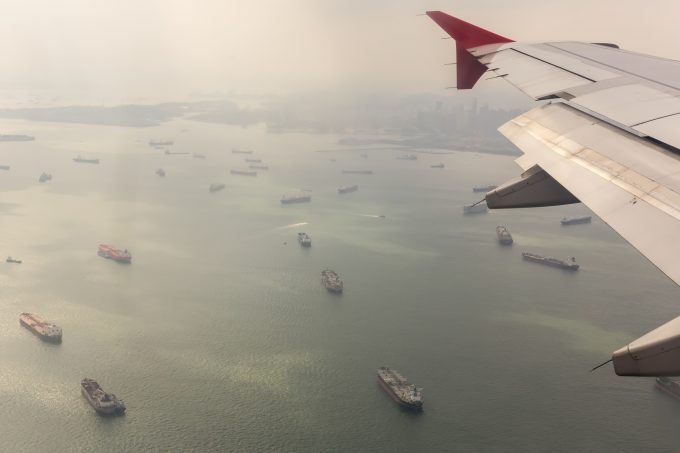Perishables shippers want more reliability on South American trades
Perishables shippers want more reliability on South America trades after Q1 figures mirror uncertainty, according ...

Poor ocean reliability and high air freight rates are leading to a new focus on sea/air combinations – especially in the run-up to the peak season.
And where once Dubai was the front-runner for the switch between modes, Singapore is also becoming a popular hub, according to European forwarders.
“Since ...
Keep our news independent, by supporting The Loadstar
Red Sea crisis has driven most new capacity into extended Asia-Europe trades
Carrier price hikes hold, driving spot rates higher as space gets scarcer
The Loadstar Podcast | Transport Logistic and Air Cargo Europe 2025
Crew forced to abandon ship in latest fire on vessel carrying EVs
Carriers on the hunt for open tonnage again as transpacific rates soar
'Now or never' for Kuehne and DHL GF to hit back at DSV
Asia-West Africa ULCV deployment opens new markets for carriers

Comment on this article
Chris Locher
September 06, 2018 at 11:00 pmAn important aspect this article failed to mention is the large volume of Sea/Air traffic over Vancouver. We have been operating a neutral Sea/Air program over Vancouver for European destinations since 1990, with volume surges during times of unrest in the Middle East (2 x Gulf Wars).
Vancouver tends to be the main routing for Sea/Air cargo originating in North East Asian ports such as those in North China, Korea, Taiwan and Japan based on the proximity to North America, while origins further South tend to be routed over Dubai and Singapore..
Vancouver has generous uplift capacity as it is only a 9-10 hour flight to the following non-stop widebody serviced European hubs: LHR, LGW, CDG, FRA, AMS, MUC. (380 767 777 747 330 350), with many additional hubs serviced during high tourist/charter summer season.
Vancouver is also priced in CAD$ which is approximtely 30% less in value than USD.
Lastly, Vancouver is a Sea/Air transhipment point for destinations in Eastern USA and South America.
Rgds,
Chris Locher
Locher Evers Intl (LEI)
Alex Lennane
September 07, 2018 at 8:56 amChris,
Thank you for adding this information to our article. Very interesting – we’ll make sure to include Vancouver next time.
Thanks
Alex
Richard Brooks
September 07, 2018 at 4:52 pmAs a seller of the Sea/Air service the service levels received from the far east through the Dubai hub are excellent and more reliable then Air.
As peak fast approaches Sea/Air becomes the go-to method of shipment for those quick to market products to get the latest toy/game/gadget on the shelves for Christmas!
Mike
September 10, 2018 at 2:47 amAny evidence supporting your comment that seAir via DXB is more reliable than air? We utlize through ULDs with EK and the performance is great. Even when we have mixed destination ULD transiting DXB that requiring breaking down and then sorting, the impact to the published t/t has been minimal. This may become an issue with peak season, but surely they will face similar challenges as in the SeAir product as the LCL box also requires de-stuffing and sorting?
I also don’t agree that the seAir is the ‘go to’ product for speed to market. Surely this still rests with a direct air solution from Asia?
I see seAir as a viable alternative between cost and transit time to service Europe. However with air freight rates still low and the market remaining relatively soft, coupled with the emergence of rail and railAir product offerings, do we need to see additional innovation or price reductions in order for seAir to make a full comeback?